5 Different Types of Razors
There are five main types of razors: cartridge razors, safety razors, disposable razors, straight razors, and electric shavers.
This guide highlights each of these so you can get an understanding of their similarities, differences, limitations, and more.
1. Cartridge Razors
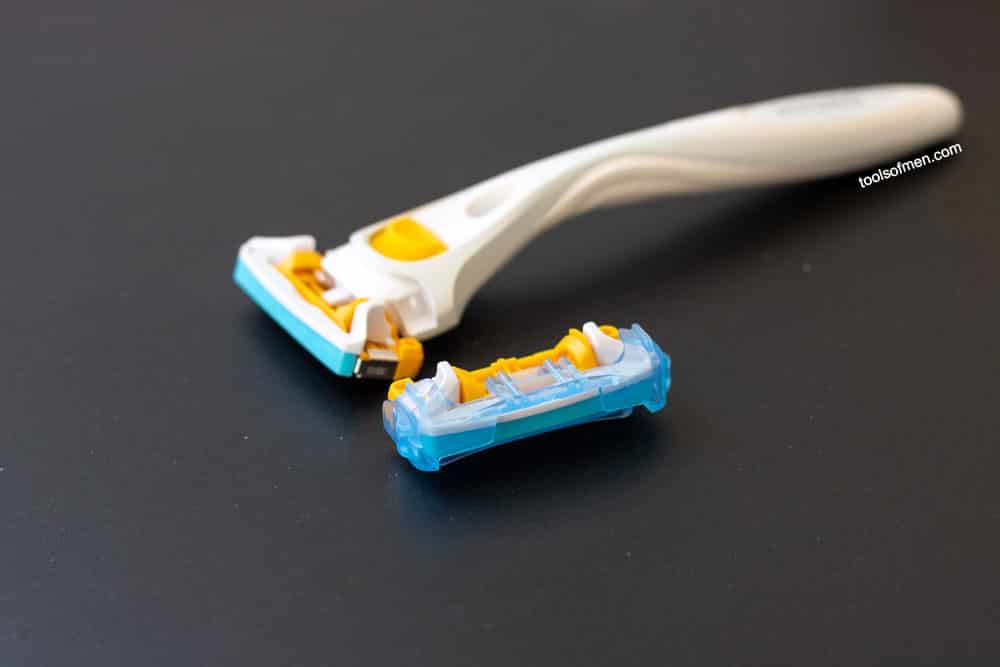
Cartridge razors are a relatively modern invention and were introduced by Gillette in 1971 with the Trac II.
Cartridge razors depend on a multi-blade razor that is replaceable. What makes cartridge razors unique from many other razors is that they rely on the hysteresis phenomenon, also know as lift-and-cut. Each razor blade on the end of a cartridge razor lifts and then cuts the hair lower. Compared to other razors, cartridge razors can provide reliably close results.
Cartridge razors are easy to learn, making them suitable for beginners. Additionally, cartridge razors will rarely cut the skin thanks to improved mechanics, including a pivoting head and comb.
Despite their advantages, cartridge razors are expensive and may cause razor bumps for some men. Razor bumps are caused when the hair is cut beneath the skin’s surface and becomes ingrown.
2. Disposable Razors
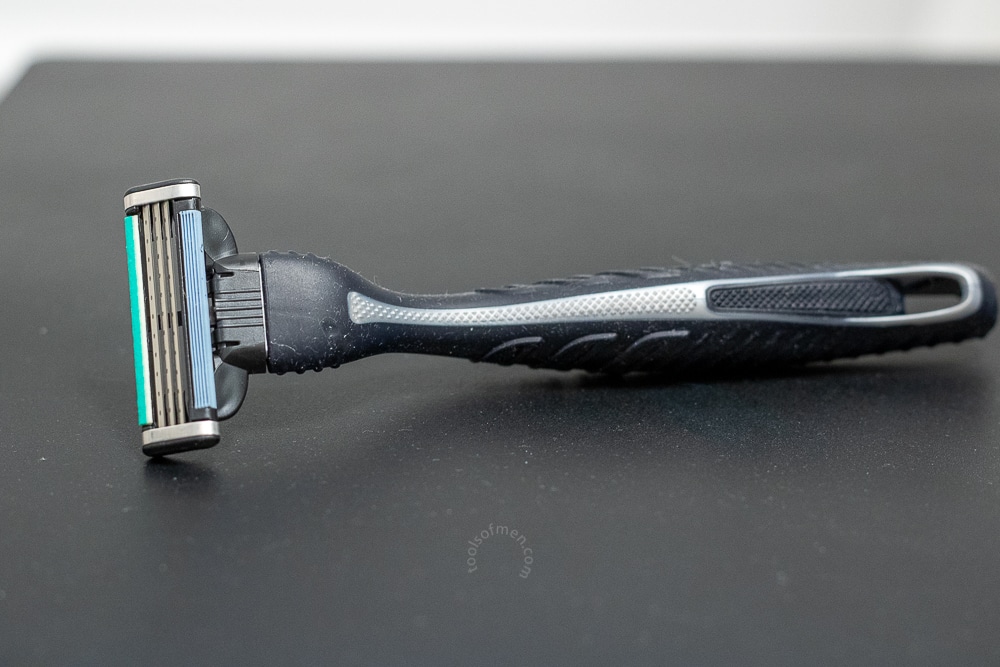
Disposable razors are similar to a cartridge razor. Rather than replacing just the razor head, disposable razors are meant only to be used a few times and then thrown out. The lifespan varies depending on the sharpness of the razor blade and how thick and coarse your facial hair may be.
Due to their reliance on plastic, disposable razors are becoming increasingly less popular due to their environmental impact. Per the EPA, in 1990, it was estimated that 2 billion pounds of razors are thrown away yearly (source).
Disposable razors are best for out-of-home use. These razors work well when traveling for business or pleasure or when shaving at the gym. Disposable razors are TSA-compliant.
You can buy disposable razors at a local drugstore, grocery store, or online.
3. Double Edge Safety Razor
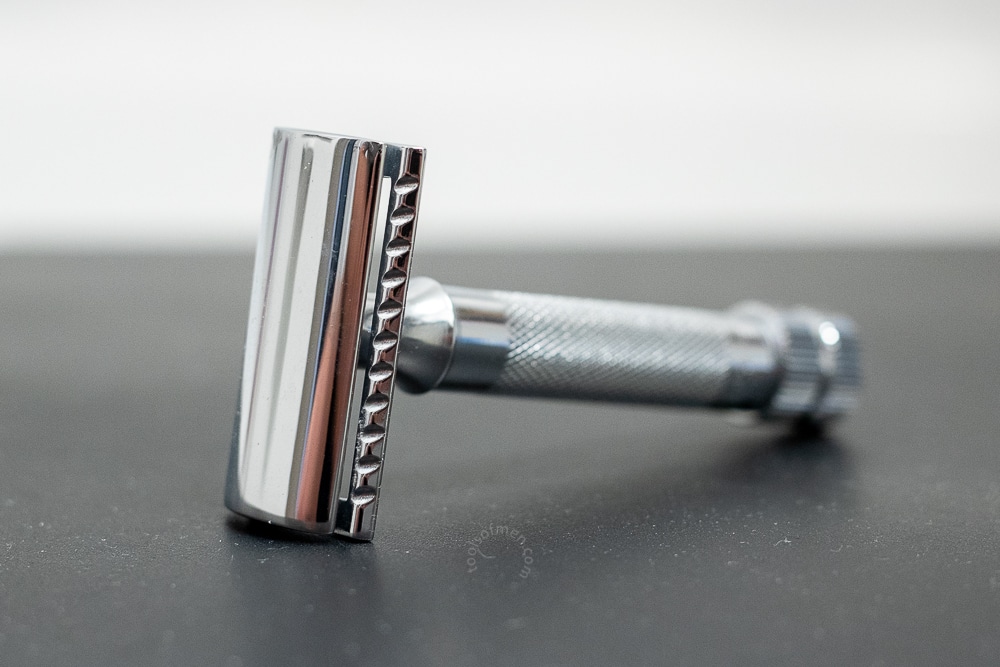
Introduced in 1903 by Gillette, the double edge safety razor was a revolutionary advancement in shaving. The safety razor gets its name thanks to the safety bar extending on both sides of the razor’s head. The safety bar flattens skin to help lessen the chance of the user cutting himself or herself.
Double edge safety razors have regained popularity due to their low long-term cost of ownership. A year’s worth of razor blades cost less than $20, making them a budget-friendly alternative to modern shaving tools. Additionally, safety razors don’t experience the hysteresis phenomenon (lift-and-cut) as there is only one cutting blade. Therefore, you are less likely to experience razor bumps when using the safety razor.
The safety razor does have some notable disadvantages. The biggest drawback to the safety razor is the learning curve. Despite a safety-focused design, surface cuts and irritation are still a concern. Additionally, safety razor blades are prohibited from carry-on luggage per TSA (although you can bring the safety razor handle onboard).
4. Straight Razors
The oldest shaving tool is the straight razor. Made from a single blade, the straight razor requires skill to get close and comfortable results. When using a straight razor, you must always hold the edge at the optimal cutting angle. Going outside of the optimal cutting angle will result in shave irritation.
Straight razor blades must be honed and stropped regularly. Professional honing can add significantly to the long-term price of ownership. Like safety razor blades, straight razors are prohibited from carry-on luggage.
When shopping for a straight razor, you’ll find many nuances between the options, particularly about the point and the grind. The point refers to the tip of the blade and its shape. Common points for straight razors include the round, square, chisel, and dutch points. The grind refers to the angle of the blade. Common grinds include the full hollow, hollow, half-hollow, and wedge grinds.
Additionally, the type of metal, including carbon steel or stainless steel, will impact the price and performance of the straight razor. Carbon steel is more durable and corrosion-resistant, but it requires more maintenance than stainless steel.
4.1 Shavettes
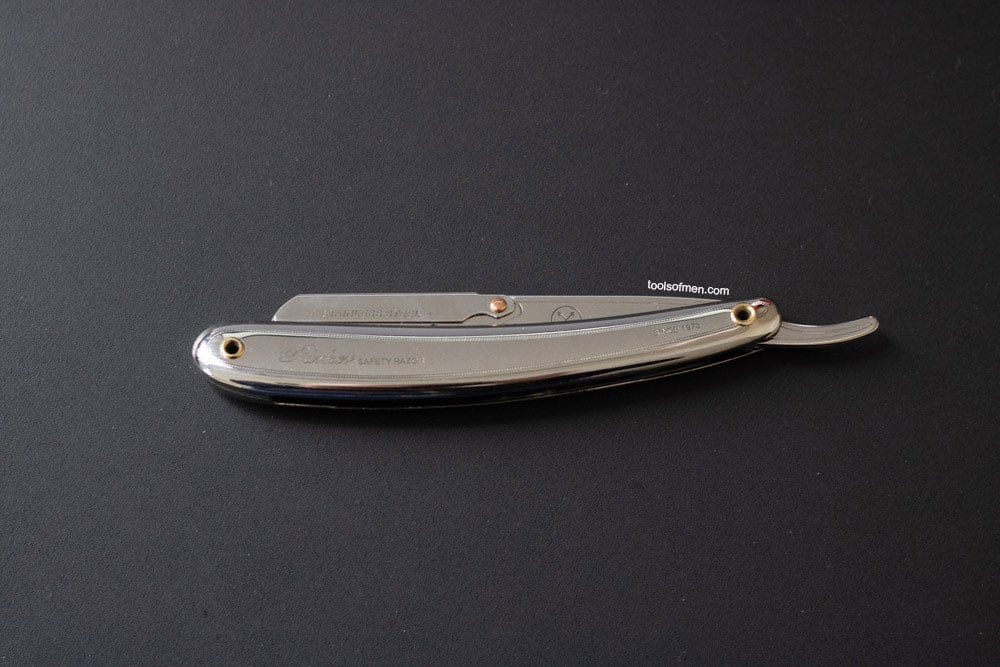
Shavettes are a modern modification to the straight razor. Shavettes have an injectible razor blade, which is simply a safety razor blade that is snapped in half. Shavettes are used in barbershops due to regulatory or sanitary reasons. Shavettes are cheaper than straight razors, making them ideal for beginners or budget-minded shoppers.
5. Electric Shavers
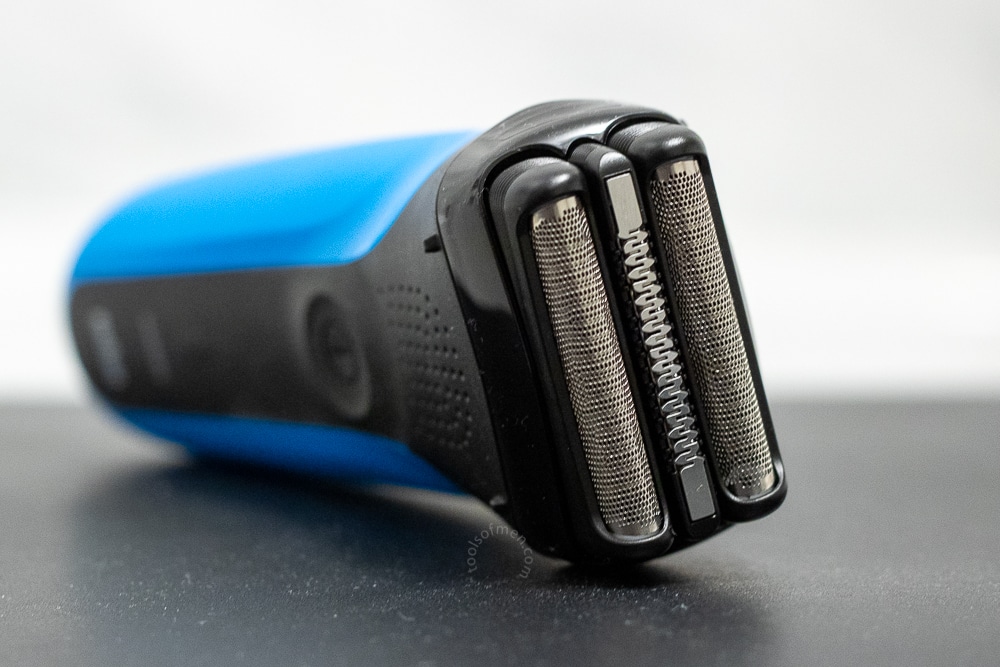
Electric shavers are efficient shaving machines. Able to remove facial hair without relying on shaving cream makes them ideal for men who want to shave quickly. Electric shavers are either rotary or foil-based.
Rotary electric shavers cut in a circular motion. While rotary electric shavers may not cut close to the skin, they can effortlessly navigate the face’s contours.
Foil electric shavers cut in an oscillating motion (back and forth). This cutting motion allows for a close, near razor-like shaving experience. Foil electric shavers have a large head, making them tougher to use, particularly in the mustache area.
Electric shavers are widely available both in brick and mortar and online retailers.
Beard Trimmers (No, It’s Not a Razor)
While not necessarily a type of razor per se, we just had to include the beard trimmer.
Beard trimmers effectively trim down your facial hair anywhere between a stubble to a few inches in length. Additionally, beard trimmers are a great way to maintain your beard without shaving it off.
Men susceptible to razor bumps or sensitive skin will also find stubble or beard trimmers to be a great alternative to shaving as they only ever cut the hair just a fraction above the surface of the skin. This means the hair is never cut below the surface like a cartridge razor, which can lead to ingrown hairs and razor bumps.
Types of Razor Blades
For every razor, you’ll find that some blade types may be shared with one another. Here’s a summary of the various types and the shaving tools they are found on:
| Blade Type | Description | Examples |
|---|---|---|
| Single Edge | The razor blade features only a single cutting edge. | OneBlade Core, Leaf Thorn |
| Injector | Uses a mechanism to push out and insert new blades. Thicker than most other razor blades. | Schick Classic, Supply |
| Double Edge | Razor blade with cutting edges on either side. Typically a universal fitting. | Merkur, Parker, Rex, Henson |
| Cartridge | Multiple razor blades housed in a plastic encasing. Often a proprietary fitting. | Gillette, Schick, Dorco, Harry’s |
| Fixed Blade | Single piece of steel sharpened on one edge that is part of the razor handle. | Dovo, Boker |
Comparisons
Want to understand the nuances between certain razor types? Here are some highlights and helpful guides:
| Comparison | Summary |
|---|---|
| Safety Razors vs. Cartridge Razors | Safety razors are much cheaper over time and environmentally friendly. Cartridge razors are beginner-friendly, versatile, and convenient. |
| Cartridge Razors vs. Disposable Razors | Cartridge razors offer a close shave and have multiple blades for a smoother shave, but can be expensive over time. Disposable razors are cost-effective for short-term use and convenient for travel, but not as environmentally friendly. |
| Safety Razors vs. Straight Razors | Safety razors are user-friendly, safer to use, and economical in the long run. Straight razors provide a close, clean shave but require more skill and maintenance. |
| Shavettes vs. Straight Razors | Shavettes are straight razors with replaceable blades, making them more hygienic and less maintenance-intensive than traditional straight razors, which require stropping and honing. |
| Manual Razors vs. Electric Shavers | Manual razors, such as safety, cartridge, and straight razors, provide a close shave and precision but require careful handling. Electric shavers are convenient, fast, and safer but may not give as close a shave. |
| Cartridge Razors vs. Shavettes | Cartridge razors, with their multiple blades and pivot heads, are designed for ease of use and comfort, making them quite beginner-friendly. Shavettes, a type of straight razor with replaceable blades, provide a very close shave and are favored by many professional barbers for their precision. However, they do require a certain level of skill and care during use. |
7 Considerations for Choosing a Razor
Finding the right razor blade for your grooming routine requires a self-assessment of your needs. You’ll generally want to consider the following:
- Shaving needs: This may include what you intend to shave (facial hair, body hair, pubic region, etc.).
- Budget: Upfront costs and the long-term investment of the razor and blades.
- Portability: Some razors are more suitable for travel while others may require special handling.
- Efficiency: Basically how long it takes to get the results that you want.
- Aggressiveness: Within each razor category, the closeness of the shave, the sharpness of the blade, and how your skin reacts varies.
- Brand Reputation: Certain brands are made better than others – this may matter depending on your preference.
- Environmental Impact: Does the razor produce excessive waste – or is it a sustainable grooming tool?
We talk about this at length in this guide for choosing a razor.
Cost of Ownership (Initial & Long Term)
Aside from the shave performance itself, the cost of ownership between all the razors is significant. Here is an approximation of how much you can expect to pay for a new razor:
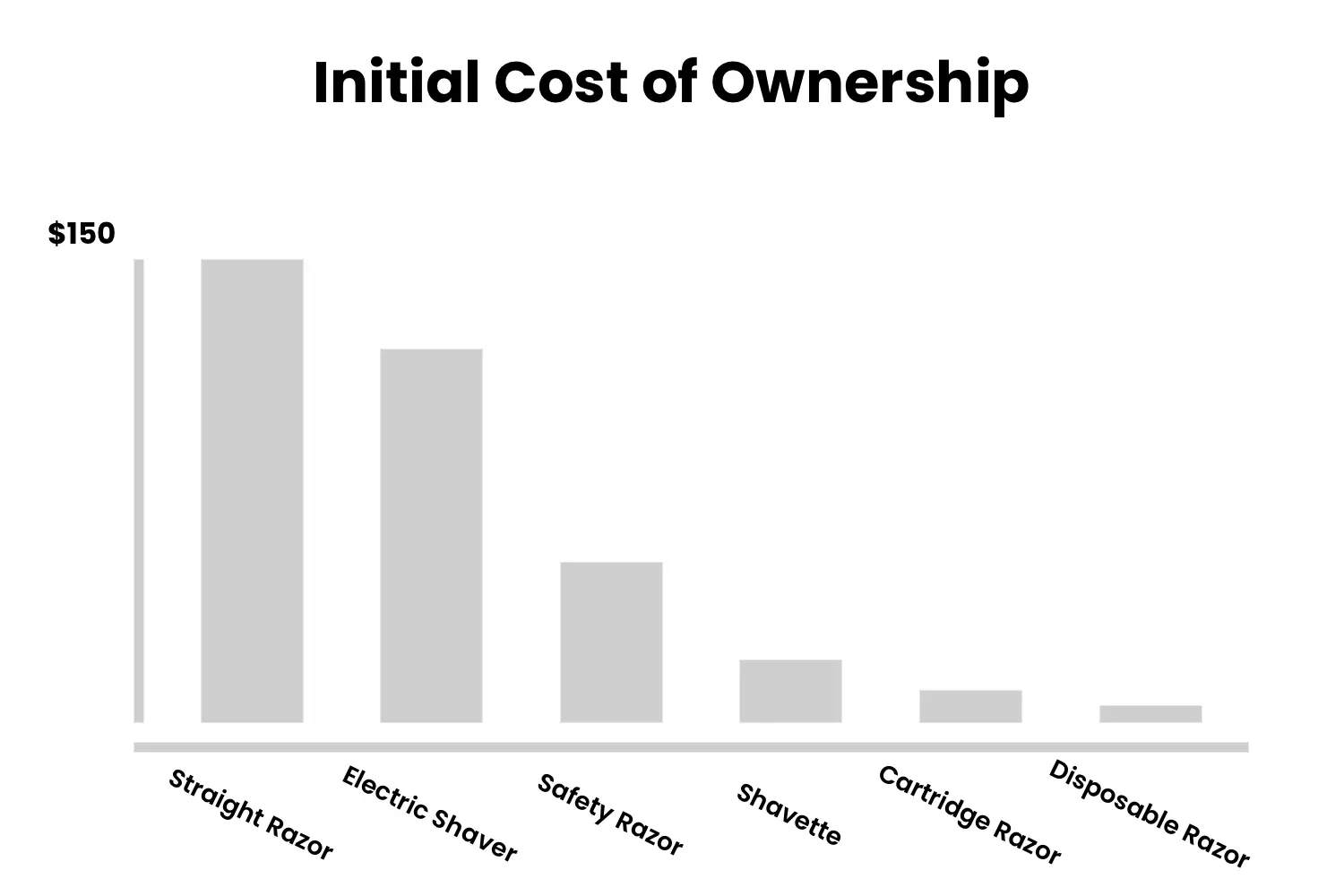
However, the illustration above only shares half the store. Here’s how much you can expect to spend per year on replacement blades:
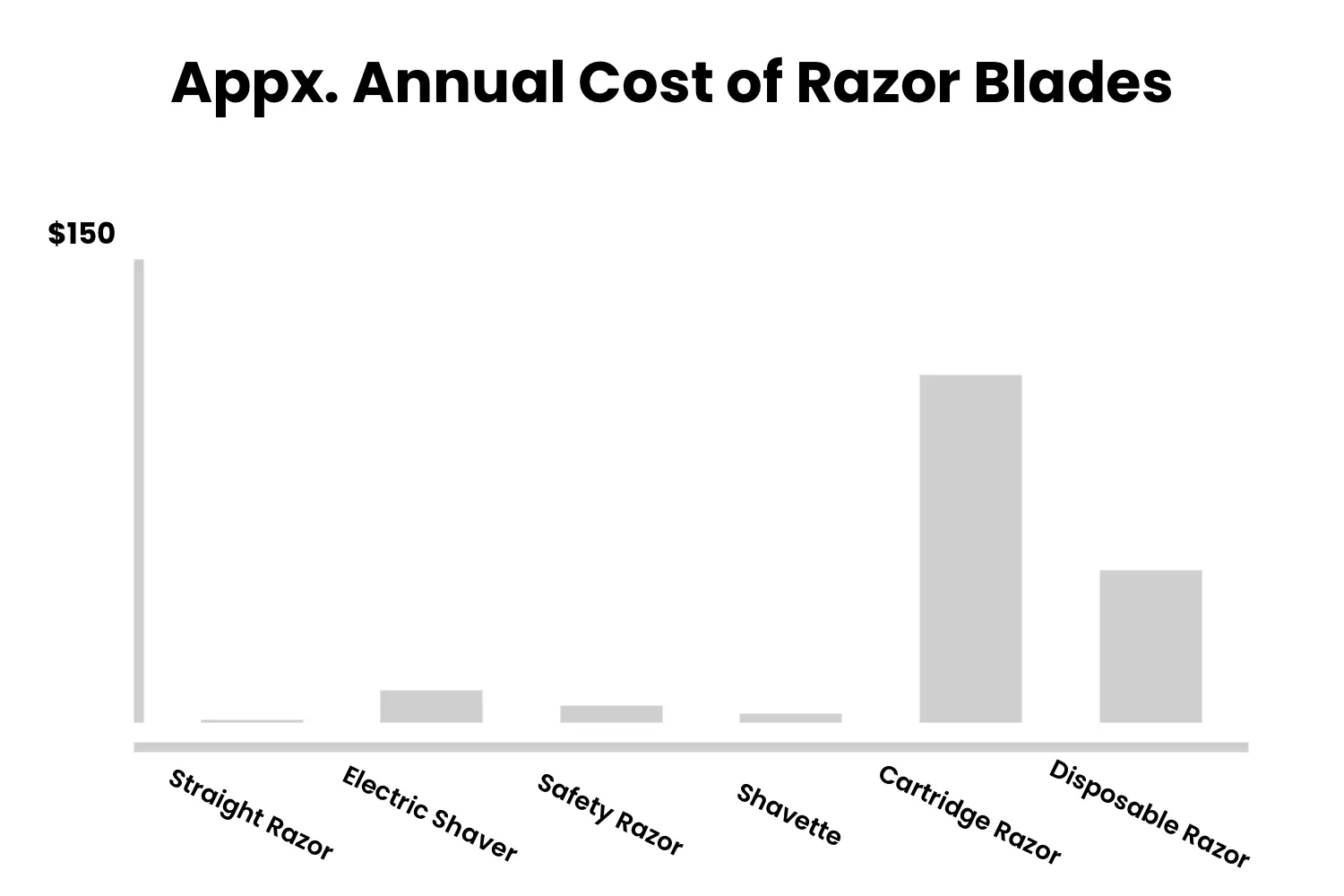
As you can see, the cost for straight razors, electric shavers, safety razors, and shavettes is nominal (no more than $10 per year on average).
Area for Shaving
While all razors can shave hair on your body, certain ones are better suited for specific areas due to their design. This table summarizes what area the razor works well with:
| Razor Type | Facial Hair | Body Hair | Head | Pubic Region |
|---|---|---|---|---|
| Cartridge Razors | ✅ | ✅ | ✅ | ✅ |
| Disposable Razors | ✅ | ✅ | ✅ | ➖ |
| Double Edge Safety Razor | ✅ | ✅ | ➖ | ❌ |
| Straight Razors | ✅ | ❌ | ❌ | ❌ |
| Electric Shavers | ✅ | ➖ | ❌ | ❌ |
Skin and Hair Type
Your choice of razor can be significantly influenced by your skin and hair type. If you have exceptionally coarse or curly hair, razor blades with a single cutting edge or cartridge razors with fewer blades will help prevent ingrown hairs and razor bumps.
This is because multi-blade razors can pull and tug at the hair, causing it to retract below the skin’s surface and grow back into the skin, leading to irritation.
Here are some recommendations based on the skin and hair type that is to be shaved:
| Skin/Hair Type | Recommended Razor Type | Reason |
|---|---|---|
| Sensitive Skin | Safety Razors or Beard Trimmers | The single edge on a safety razor reduces the chances of skin irritation, and beard trimmers cut a fraction above the surface of the skin, thus reducing the potential for razor burn. |
| Coarse or Curly Hair | Safety Razors or Straight Razors | These razors cut hair cleanly without tugging, reducing the chance of ingrown hairs. |
| Dry Skin | Electric Shavers or Mild Double Edge Safety Razors | Electric shavers don’t dry out the skin when removing hair. Mild double edge safety razors cut hair a fraction above the surface, making them less likely to exacerbate dry skin. |
| Thin or Fine Hair | Cartridge Razors or Electric Shavers | The multiple blades of a cartridge razor or the quick oscillations of an electric shaver can easily cut through fine hair strands with fewer passes, lessening the chance of skin irritation. |
| Normal | All | If irritation or ingrown hairs aren’t a concern, then any razor should be able to deliver a close, comfortable shave. |
Frequently Asked Questions
Here are some common questions folks have when researching the different types of razors available.
What razor has the closest shave?
This will vary significantly on the design of the razor, number of blades, and skill level of the user. Cartridge razors provide a reliably close shave with minimum effort due to the increased number of blades.
Does the number of blades matter?
The number of blades on a razor impacts the pressure and the closeness of the shave. More blades typically correlate to smoother results. However, this may also result in razor bumps for some people.
How can I figure out my skin sensitivity? Just trial and error?